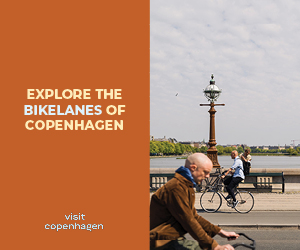Roland Barthes says, that ‘The wearing of an item of clothing is fundamentally an act of meaning that goes beyond modesty, ornamentation and protection. It is an act of signification and therefore a profoundly social act right at the heart of the dialectic of society.’ Nomadic life is under increasing threat as governments restrict and regulate nomads’ lives, while our fast-moving, ever modernising global society marginalises their sensitive, symbiotic relationship with the environment. How can we learn from their efficient and effective use of resources?
In certain nomadic cultures clothes can have a life-saving function, such as those of the reindeer herders of Siberia, whose deerskins are warmer and stronger; or they may have a pronounced heritage or religious element, as they do for the Mongols with their ancient shamanistic practices. Clothes often form part of the commercial transactions nomads make with settled communities, for many nomadic cultures have highly developed craft skills: the fine woven rugs in parts of South Asia are sought after far beyond the region.
Across the centuries nomads have maintained a balanced approach to goods and possessions. Conversely, as permanent communities have become increasingly dependent on the power of consuming and are now unable to choose not to buy, we are becoming locked into unsustainable patterns of consumption.
In their report on consumption, ‘Chasing Progress’, the new economics foundation points out that ‘every society clings to a myth by which it lives; ours is the myth of economic progress’. Rather than happy and fulfilled, our economic wealth has made us obese and wasteful: economic growth, unlike sustainable growth, fails to put the quality of our lives and health at the heart of how we measure progress. ‘Chasing Progress’ argues for a ‘new Measure of Domestic Progress (MDP), designed to reflect our progress towards sustainable development by including economic progress, environmental costs, resource depletion and social factors’ – measures which will help us meet the sustainability agenda. These qualities reflect nomads’ values as they exploit their environment without destroying it, and respect their possessions for what they contain and bring to their lives.
The fashion industry is beginning to rise to the challenge of helping us value our clothes so that we see them in a more responsible light, and take greater pleasure in their design, manufacture and materials. There has been an increase in clothes manufacture which doesn’t follow traditional approaches and which helps support global communities.
The cooperative Global Mamas has contributed ranges to Topshop. Using traditional craft skills, they produce unique, high-quality products, while at the same time ensuring a sustainable livelihood for women and girls in Ghana. Similarly Tabesia, a consortium of four South African and two British Higher Education Institutions helps market and sell products from previously disadvantaged communities by assisting their business set-up. Here in the UK, interest in the social as well as the craft aspects of fashion is emerging.
Features and articles about dressmaking – sewing machines are one of today’s fastest-growing purchases – combine with a rise in knitting groups and sewing circles. Refashioning and restyling are recognised as creative and inventive ways of keeping our clothes, while clothes swaps are not only a practical and economic way of rejuvenating our wardrobes but also have a distinctly social and community dimension.
Over time, we might come to understand how to satisfy our need for the new, which may be, as Chatwin believed, an ingrained part of our human psyche, without the constant urge to purchase. As Chatwin recalled in The Songlines:
The Moors have a passion for the colour blue. Their robes are blue. Their turbans are blue. The tents of the bidonville are patched with blue cotton; and the shanties, cobbled together from packing cases, are bound to have some blue paint somewhere.
This afternoon I followed a wizened old crone who was picking over the garbage dump in search of blue rag. She picked up one piece, She picked up another. She compared them. She chucked the first piece away. At last she found a scrap which was exactly the shade she was looking for – and went away singing.













